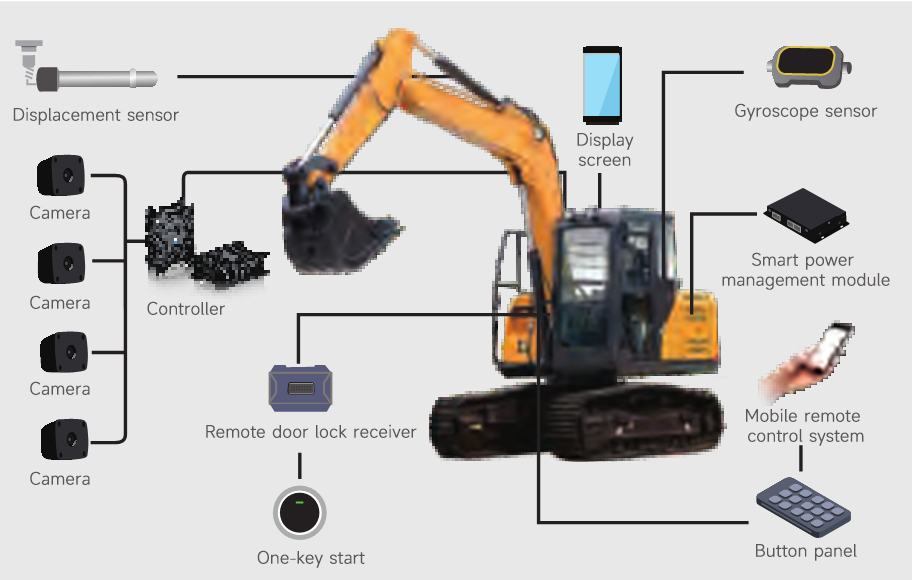Mobile machinery system - Construction vehicle
Mobile machinery system - Construction vehicle

Intelligent automation, safety and flexibility, remote diagnosis.
China's construction machinery industry is currently in a crucial stage of transformation from a manufacturing power to a manufacturing powerhouse. Currently, there are over 1,300 companies in China engaged in the production of various types of vehicles. Among them, there are 171 automotive manufacturers (77 of which are counted in groups), 120 motorcycle manufacturers, over 900 manufacturers of specialized vehicles, and 135 manufacturers of tricycles and low-speed trucks. Mobile machinery includes construction machinery, aerial work platforms, sanitation vehicles, and agricultural machinery, among others. They can generally be divided into mechanical control and hydraulic control. To ensure efficient, safe, and stable operation of the equipment, it is necessary to have controllers with high stability, strong anti-interference capabilities, and fast computing speeds to coordinate the stable operation of various systems, thereby meeting the usage requirements in different working enviro

Equipment introduction
Construction vehicles are the backbone of construction projects, and their
presence increases the progress of construction projects significantly,
greatly reducing the reliance on manual labor. Common types of
construction vehicles include heavy-duty transport vehicles, large
cranes, excavators, bulldozers, road rollers, loaders, power repair
vehicles, emergency response vehicles, government-specialized
engineering vehicles, and more.


Program advantage
By combining modern automatic control theories with sensor detection
technology, intelligent hydraulic cylinders are applied to excavators
for attitude detection, achieving the objectives of operation area
limitations, digging force limitations, and intelligent operation.
Multiple display units and controllers interact with each other through
a bus, ensuring the security and flexibility of the control system.
Additionally, they can be connected to communication systems such
as GPS and GSM to achieve remote diagnosis, cluster control, and
management of the control system.




